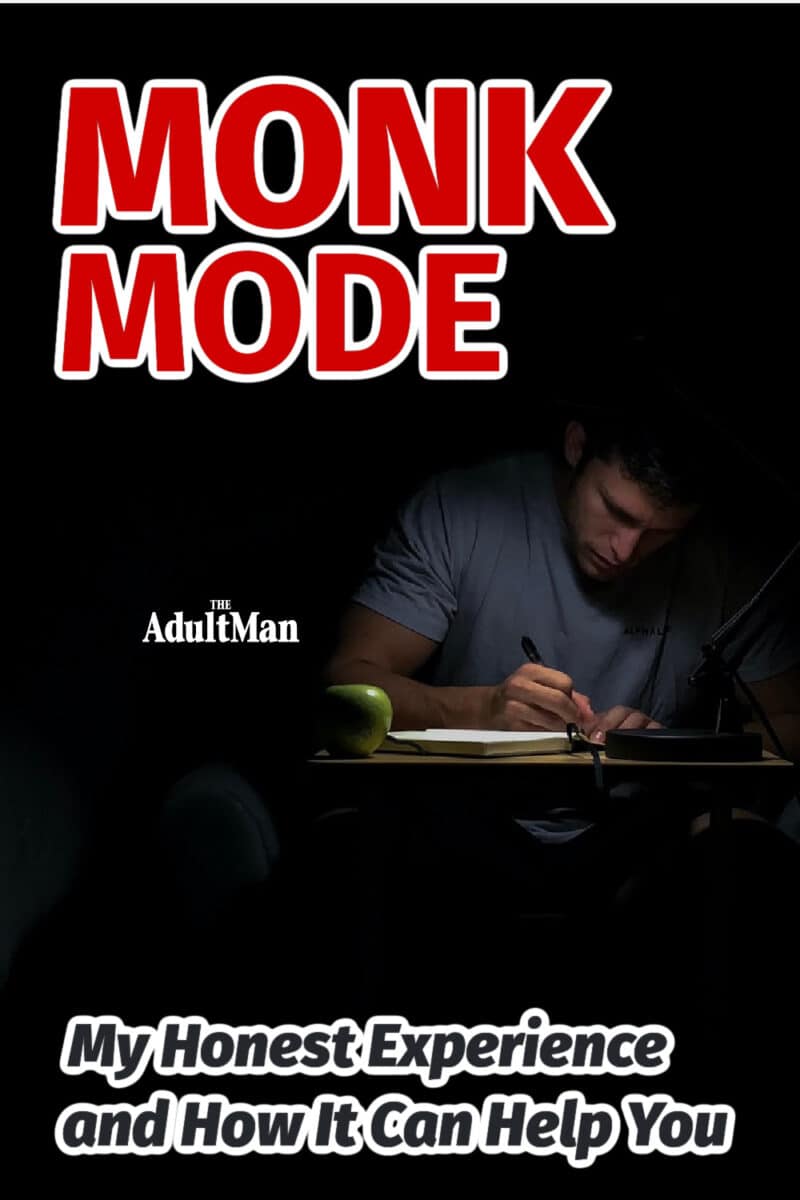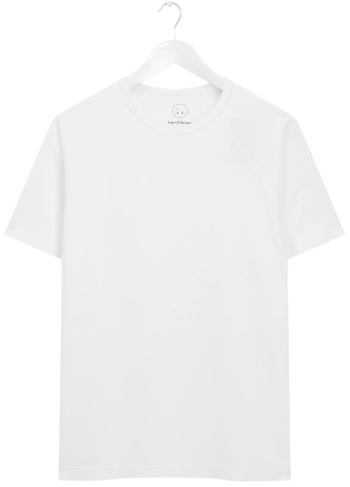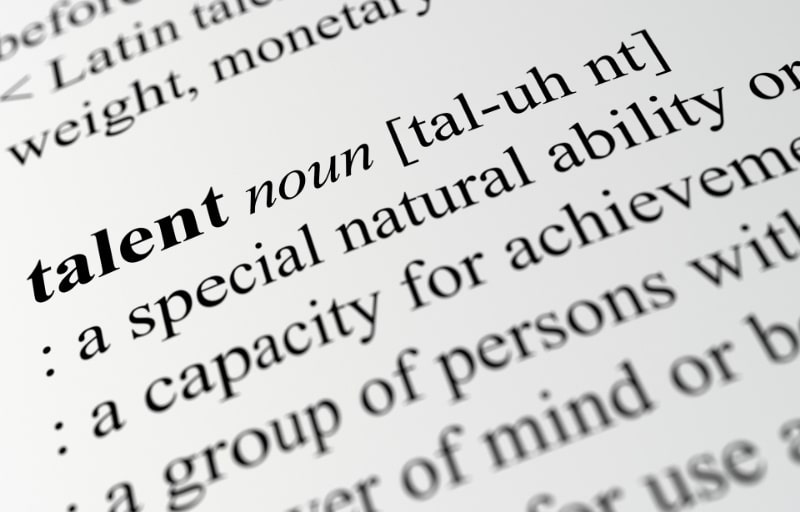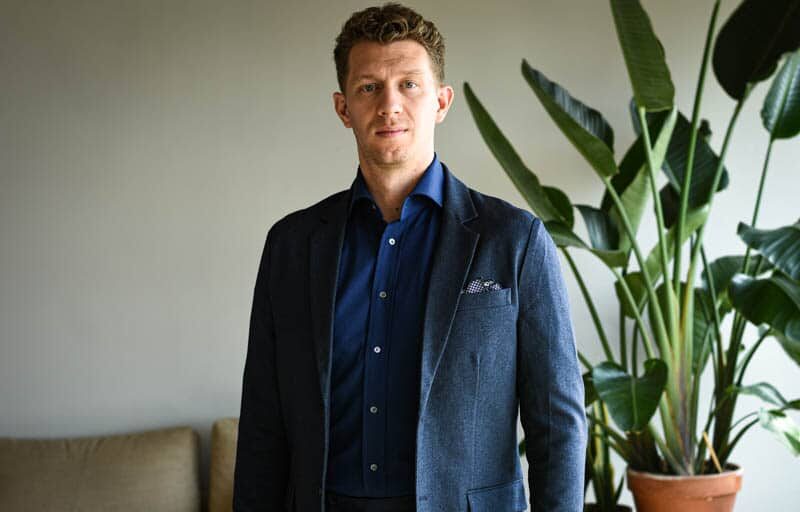What is monk mode?
Monk mode is a way of living in which you “cut the fat” from your life in order to become more productive, get to know yourself and achieve your goals. This is done through contemplation, an increase in self-awareness and the sacrifice of certain aspects of modern-day life.
Usually, a practitioner will sacrifice their social life, amongst other things, in order to improve in other areas. Whether that’s hitting business targets, fitness goals, or overcoming bad habits.
Well—monk mode seems like a barrel of laughs.
No social life, no fun? All for a little transformation?
No thanks.
While I can understand you might feel this way, there are actually a ton of benefits to going all Zen master and practicing monk mode.
Along with your social life, you might end up quitting junk food, social media, video games and a host of other online addictions while in monk mode.
The practice is proven to achieve great results and quite literally transform lives.
So maybe giving up a little social time is worth it after all.
And it’s not as extreme as you might think. Or at least, it doesn’t have to be.
I’m not suggesting you pack it all in and go live on a mountain for a year. Nor that you quit your job, leave your partner or ditch all your friends in the process.
Far from it.
You won’t be robed-up with a shaved head either.
Essentially, you’ll be taking a little time out from some unhealthy habits in order to get to know yourself and start smashing those goals.
Skip Ahead
Objectives of Monk Mode
The main objective of monk mode is to improve your life.
Simple as that.
You’ll likely only go into monk mode if you’re unhappy with either your career or yourself in general.
Most people who practice it are doing so for self-development purposes. They’re seeking to be the best version of themselves, often mentally more than physically.
You’ll aim to achieve this by cutting out several vices from your life and taking that extra time to be productive.
So say you spend two hours a day on social media, two hours a day playing video games and an hour a day browsing the web.
In monk mode, you won’t do any of that.
You’ll take those five hours and fill them only with healthy habits. Things that are productive and good for you.
It’s like a self-development cocoon. You isolate yourself for a period in order to grow. You then emerge transformed.
You’re streamlining your life to eliminate distractions and be as productive as possible.
Pretty hardcore, right?
Not necessarily.
My Experience With Monk Mode
I’ve been in monk mode a few times in my life without even knowing it.
And not just because I like my own company.
I’ve turned to monk mode in my lowest moments. Times when life wasn’t going well and I felt that something needed to change.
I first tried this when I was in high school, between the age of 17 and 18.
And let’s not get too deep here, but it was perhaps the unhappiest I’ve ever been.
I’d hit a form of rock bottom and become really unhappy with who I was.
And I’m not surprised. I was a pain in the ass back then.
I was always wallowing and complaining. Playing the victim and not taking any responsibility for my own life.
So I decided that something needed to change.
More accurately, I needed to change.
I wanted to become a better person, a better version of myself. So naturally, I looked to self development.
This kicked off an intense period of personal growth for myself. And my first experience with monk mode.
What Did My Monk Mode Look Like?
It turns out I’d already been practicing two aspects of monk mode before I even began.
As a natural introvert, I’ve always enjoyed spending time alone, and spent most of my time that way, regardless.
Therefore, as sad as it sounds, I didn’t have much of a social life back then.
I still don’t to be honest.
I’ve also been a thinker for most of my life. I’m constantly thinking and analyzing the world around me as well as myself.
Basically, I take myself too seriously.
As annoying as that can be—sometimes I just want myself to shut up—it has its uses.
So before I started my self-development journey, I already had plenty of time on my own and a knack for self-reflection.
Both would be amplified during my monk mode.
With the resolve that comes from being at rock bottom, I launched into a packed schedule of self-help.
Let me break down exactly what I was doing:
- Reading. I read books every day during this time. Not fictional fantasies, but self-improvement books. I’d read for at least an hour each day, if not more. Taking on new ideas and sharpening my mind.
- Meditating. I meditated each day for up to two hours at a time. These were by far the longest meditations I’ve ever done, lasting at least an hour and half per session.
- Reiki. I practiced a form of alternative Japanese medicine called reiki. More simply known as energy healing. Honestly, I’m not sure about how well this one holds up. But back then I was doing it for an hour a day.
- Exercise. I did some form of exercise each day during my monk mode. I alternated between cardio and weights each day.
- Mindfulness Practice. Along with meditation, I also began to practice mindfulness in my day-to-day activities. Trying to stay out of my head and in the present.
- Watching Inspirational Content. I got really into motivational videos on YouTube, and videos with big ideas. Stuff like TED talks and those videos with the uber-clickbait titles. Greatest Speech of All Time! Or This Speech is Guaranteed to Change Your Life! It wasn’t, and it didn’t, but hey, they were definitely worth a watch.
- A Whole Lot of Self-reflection. I naturally did a ton of self-analysis during this time—examining the way I thought and acted.
That was the bulk of it, and it probably consumed about five hours of each day.
Bear in mind, at the time I was still going to high school 9 – 5. So during the week, all my free time was taken up with self-development.
Which meant I cut down on a lot of things as well. I played fewer video games, wasted far less time on the internet and never really went out.
I also wanted to cut down on sweets and sugary foods, so I limited myself on those too.
All in all, the weekdays were pretty busy, but I had the weekends to relax.
I still did some self-development, but I was left with plenty of time to do my own thing.
At the time, that was basically playing video games and eating junk food.
Now that doesn’t sound too bad.
You see, I didn’t take it to the extreme and cut out everything bad. In fact, I didn’t focus on cutting things out at all.
I focused on establishing healthy habits and routines. The other stuff got replaced by that and naturally receded.
Looking back on it, I don’t think it was too bad. I certainly liked it at the time and compared to some other monk modes it was pretty tame.
I ended up doing this for between two and three months before I burnt out. Though it was more than worth it.
My Results With Monk Mode
Let me start by saying that the results weren’t magical. My life wasn’t completely changed by monk mode, and I don’t want to offer you false promises.
That being said, this intense period of self development came closer to magic than anything I’ve seen before.
Though, I suppose that’s to be expected.
What else would improve your life more than dedicating all your focus towards it?
That’s the simple and slightly plain truth of monk mode. Yes, it works. But for no more reason than you are putting in a ton of work while you’re doing it.
Hard work pays off.
And once again, my life didn’t completely transform in three months.
I didn’t shed my robes, shine my scalp and poof! Everything was great. Not at all.
P.S. I didn’t actually shave my head during monk mode. Don’t worry, that’s not a requirement.
But to illustrate how things did change, I’ll break my results into a few short-term and long-term gains.
Short-term Benefits
- Boost in overall happiness. Despite what seems like a grueling schedule, I was much happier during monk mode than I was previously. My mood got a boost, and I felt much more joyful each day.
- My mental health improved. Before I started monk mode I was depressed. It’s the reason I began developing myself. But by the end of the three months, my depression was long gone, and I was much healthier mentally.
- My physical health improved. Not only did I become mentally healthier, but I also improved physically. The exercise I did each day ensured my fitness improved. Meaning I felt better and looked at my best.
- My head became clearer. One of the biggest issues I had before monk mode was that I always felt dazed. Like my life was a blur. My practice of meditation and mindfulness cleared that right up. I felt much more alive and in the present moment.
Long-term Benefits
I won’t do a bulleted list here as the long-term benefits are far too vast to put into specific points.
Just to start with, I could put all the benefits mentioned above into the long-term category. They’ve all carried over.
My improved mood wasn’t just a one off. I’ve been far happier in general since this point in my life.
Neither was my increase in physical or mental health. My head has only become clearer over time.
Of course that’s down to a variety of factors, but monk mode was certainly the original source.
The things I learnt and the person I became in those months have carried through and evolved over the years to ensure I stay happy and keep growing.
Those three months were the initial catalyst for the change and improvement that has shaped the last six years of my life.
Yes, there have been ups and downs. I wasn’t praising my lucky stars that I went into monk mode when I had that little bathroom accident last year.
The less you know, the better. Not a great moment for me…
But I’ve been far more successful, much more myself, and way happier since monk mode. In almost any life aspect you can think of.
Monk mode essentially kick-started a journey of personal growth that I’m still on now. And that personal growth has drastically improved my life.
It’s only as I write this now looking back on it that I realize just how drastically.
But enough about me, how do you actually do monk mode?
How to do Monk Mode: 6 Key Rules to Follow
1. Choose Your Approach
The first thing to consider before starting monk mode is how intense you’re going to be.
Are you going to take it to the extreme? Cut out all distractions from your life, isolate yourself for months and meditate for days at a time?
Or are you going to go easy on yourself? Practice a few healthy habits during the week, cut out some vices and take the weekends off?
My personal advice would be to go somewhere in between.
The first is too hardcore for most of us, and we’d likely fail and lose motivation.
The second is too easy to even call monk mode.
So choose a monk mode approach that’s still hard, but something you can manage.
Most of all, make sure it’s beneficial.
When you’ve decided on your intensity, you’ll have a clearer idea of how much time you’re going to dedicate to monk mode.
Naturally, a more intense schedule will demand more of your time. So if you’re planning an extreme practice, it’s probably best to set out how much time you’re going to dedicate each day.
Otherwise you may find that you aren’t able to manage your time and your tasks will get on top of you.
You’ll also want to choose the period of time you’re going to be in monk mode for.
Generally, it should be a minimum of one month. Anything less makes it hard for real change to take shape.
In terms of a maximum, there isn’t one, really. Though, I’d suggest a max of three months to start with. More than that and you may burn yourself out completely.
Whatever you choose, the best practice is always one that works best for your personality.
Are you able to pack your schedule with productivity every day? Or will that run you down before you even start?
For the best results, tailor your routine to your own needs.
2. Have a Purpose
Motivation is often the make or break in monk mode. It’s important to have enough of it or you will inevitably give up.
That means carrying the motivation you’ll start with all the way through to the end.
It will certainly drop at times, but you need to make sure you can pick it back up.
That’s why it’s vital to have a purpose. One that you draw on for inspiration.
Figure out what yours is before you start and find a way to keep reminding yourself of it. Whether that’s saying it to yourself each morning or having a vision board up on the wall.
3. Follow a Plan
A goal without a plan is just a wish. – Antoine de Saint Exupéry
Having a plan in place to guide you will help you through your monk mode.
We’ve all done it. We’re supposed to be doing something productive, but because we haven’t got a plan, everything is a little loose and we get lazy.
We skip that gym session or order a takeaway because there’s nothing but ourselves to tell us otherwise.
Write your plan down. That makes it real and something other than yourself motivating you and holding you accountable.
It’s also a clear roadmap towards success. If you’re ever feeling lost along the journey, just refer back to your plan to get yourself back on track.
Part of creating a plan will also be to choose what habits you’ll be taking up or what you’ll be working on.
Here’s a few common ones.
- Meditate. This is the only one I’d say is a must. You’ll grow so much more in monk mode if you meditate daily. I’d go as far as to say that monk mode has little point unless you’re meditating.
- Read. Get yourself some great self-help books and devour them.
- Work. Get to work on any projects that you’ve been too busy or too lazy to get done.
- Reflect. Take plenty of time to yourself and reflect on who you are, where you come from and where you’re going.
4. Don’t Forget to Exercise
You’re likely going to be doing a lot of mental work during monk mode. But be careful to not get too cerebral.
Exercise is a great way to take a break from all that self-reflection and philosophical thinking.
And trust me. You will absolutely need a break from that.
I do far too much of it and let me tell you—I get sick of hearing myself think.
Doing some exercise also ensures that you don’t neglect your physical health while you’re doing so much work on the mental side of things.
5. Celebrate Your Wins
This one’s about motivation as well.
Positive reinforcement goes a long way in creating good habits.
This means not beating yourself up when you fail. Because you will fail sometimes.
You won’t be escaping that one.
But also praising yourself for your victories.
Positively reinforcing yourself like this tells your brain to keep doing more of what you’re rewarding yourself for.
So you’re consciously training your subconscious to keep practicing the good habit.
6. Keep a Journal
Journaling has a ton of benefits.
A journal is a great tool for tracking transformation and making sure you learn as much as possible from monk mode.
It’ll help you unravel your own insights at the time, and help you remember your new found wisdom after your monk mode is long gone.
It’ll also show you just how much you’ve improved.
You can look back from your high horse and laugh at pitiful old you as you gallop towards a new life.
Just remember, you don’t suddenly have the wisdom of the Dalai Lama just because you’ve been meditating for a few months.
Sometimes the last thing people want to hear is sagely advice. Well—my fiance never seems to want to hear it, anyway.
Things to Watch for During Monk Mode
Feeling Down
You have to break a few eggs to make an omelette.
In other words, things might get worse before they get better.
In monk mode, you can’t escape your life anymore. You have to face it.
You can’t mask your unhappiness with alcohol, drugs or virtual reality.
At first this can be depressing. Facing your demons head on like this makes you realize just how lost you are.
But it’s not all doom and gloom. You’ll quickly move through that and realize that you now have the power to change.
In the end, you’ll embrace and be thankful for that initial low mood.
Boredom
This might be something you just have to deal with during monk mode.
Let’s face it. Self-development isn’t known for its entertainment value.
Reading, meditating, working on yourself. It’s pretty boring sometimes.
But if you can push past the boredom and carry on. You’ll come out the other end of monk mode a much improved man.
Check out this clip for a little advice on dealing with boredom:
Cravings
This is an interesting one.
It’s important to take notice of your cravings during monk mode. Not just so that you can watch out for and stay clear of them. But so that you can get to know yourself and your habits.
You’ll likely realize you’re addicted—to use the term loosely—to a whole ton of crap you never thought you would be.
Becoming aware of this provides valuable insights into who you are and the way you unconsciously behave.
Though on second thought, maybe it’s just my serious philosophical side that finds that exciting.
Benefits of Monk Mode
I won’t go into too much depth here as I’ve discussed my own benefits already.
But the potential up-sides to monk mode are literally limitless.
Monk mode can help you achieve anything you want to, by sharpening your focus and sending your productivity through the roof.
So whatever you want to achieve, monk mode can help you get there.
Downsides of Monk Mode
As great as monk mode can be, there are definitely some downsides.
It can be very lonely. And isolation through monk mode has the potential to harm your mental health. So make sure not to isolate yourself too much or for too long.
We all need some human interaction sometimes. Even us loners.
It’s not always practical. For many of us, the modern world doesn’t really allow for extreme monk modes. Ironic, as the modern world is probably why we’re interested in monk mode in the first place.
But the fact is, not all of us have enough money to quit our jobs. We have rent to pay and nowhere near enough time for an extreme monk mode.
Some of us also have partners and loved ones we don’t want to isolate from. But the great thing about monk mode is that it’s flexible.
You might read a lot of stuff online saying that you have to cut out this and that, dedicate this many hours and completely focus on yourself. But that’s BS.
You don’t.
All you have to do is what works for you.
Whether you’re in monk mode seven days a week or just one. You’ll still be reaping the benefits.
It’s hard. Plain and simple, monk mode can be tough.
No matter how intense your practice is, there will be days that are a challenge.
But if you can push through the pain, as discussed, the benefits are endless.
Is Monk Mode Worth It?
The answer is without a doubt, yes.
It will be tough for sure, but well worth it. If you’re looking to transform your life, it’s a somewhat drastic, yet highly effective practice.
Monk mode works because it makes you work. You’ll become more productive than you’ve ever been during your entire life.
You can then take that productivity and apply it to anything you’re seeking to improve. Whether that’s your career or yourself.
One Final Tip
If you’re going into monk mode, there is one more piece of advice I can give.
Get Yourself a copy of The Mind Illuminated by John Yates.
You’re going to be meditating a lot and this book will serve as a trusted companion.
It’s a complete and in-depth guide on meditation, and walks through 10 key stages of progression, step by step.
It’s helped me develop my meditation practice a lot, and I’m sure it’ll do the same for you.












